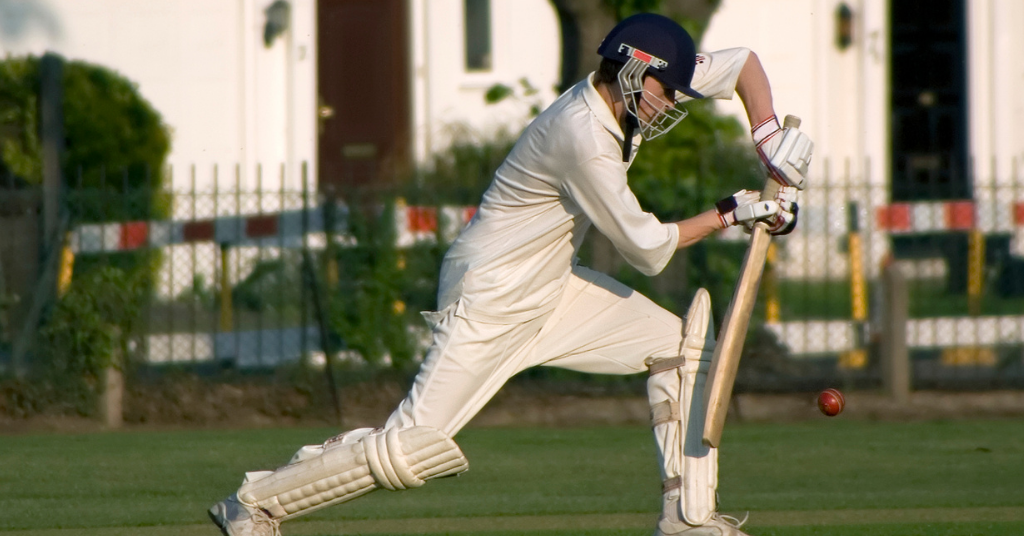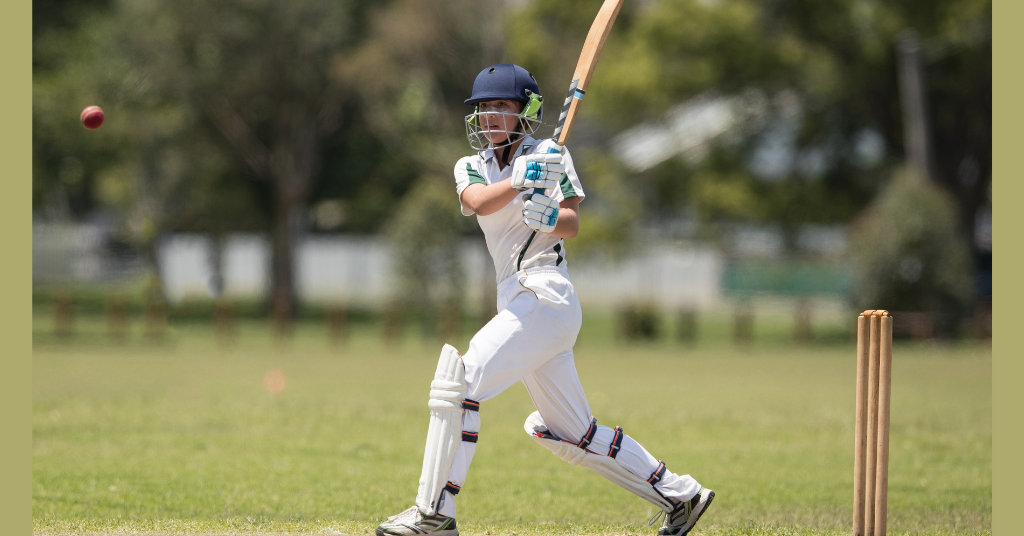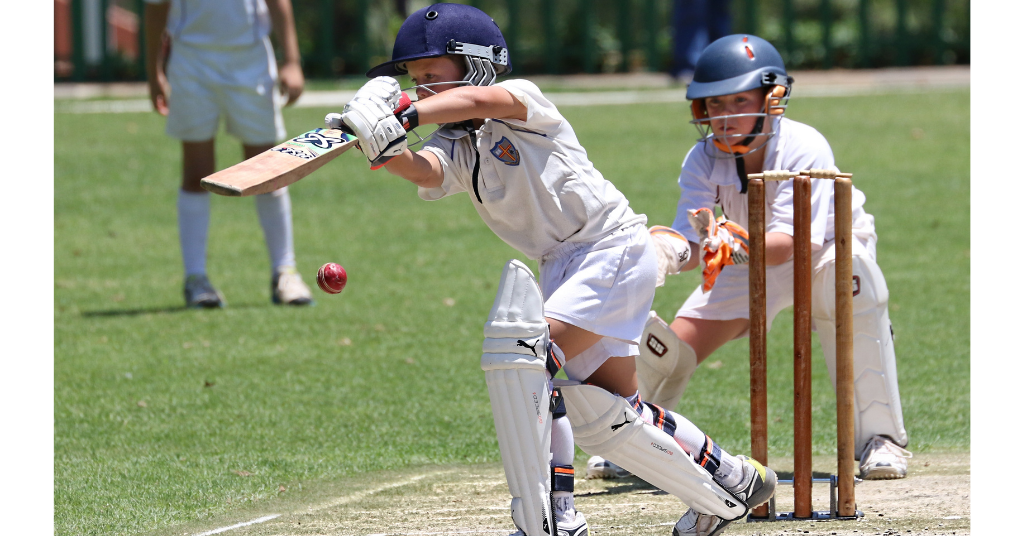Cricket is the world’s most sought-after sport after football. It helps in improving speed, agility, flexibility, and reflexes. It also aids in improving concentration, the ability to think strategically, and to utilize decision-making skills effectively. The game of cricket also helps in encouraging and enhancing sportsmanship which further helps in self-control, integrity, and respect for others is the fundamental rule of cricket. Before we proceed ahead with the basic rules of cricket for kids, let’s try to understand that it is important for kids to play this sport. 22-yard

Benefits of Cricket for Kids
i) Physical Benefits
The game of cricket offers some really good physical benefits to little kids. Jumping between the wickets offers an excellent aerobic workout. This sport also shares some similarities with martial arts (and even dance or music for that matter). Some of the common examples are- measure, timing, velocity, and proper execution of the technique. Hence, by playing cricket regularly children can also learn different skill sets by linking the sport with other activities on common parameters.
Related Article: Importance of Physical & Fitness Activities for Kids
ii) Mental Benefits
Cricket is a great way to improve your mental thinking. By playing this sport your kids will also be making some serious effort to learn the game. It is the responsibility of the cricketer to develop a complete and proper system of thoughts and this will help them in developing a greater understanding of the playing strategy. It is on the player to learn about the different shots or variations in bowling and learn how to determine their opponent’s thoughts.
iii) Social Benefits
By playing the game of cricket, children often become friends and compete with each other. Thereby, finding themselves meeting hundreds and thousands of people over the years. Since they also get an opportunity to travel for matches locally, nationally, and internationally, it is a great way to interact and make strong social connections.
iv) Improved Motor Skills
Bowling, batting, and catching the ball require efficient gross-motor coordination. These activities are important as they not only complete the sport of cricket but also make use of the large body muscles to work.
v) Better Body Balance
If you want your kid to master any sport, balance is the most important part. Therefore, balance is something that your child can not only achieve but also improve through this sport as a lot of concentration is needed while playing.
vi) Great Team-Building Exercise
Cricket is a team sport. 11 players must work together on the field, and properly utilize the playing strategies of the opponent. Kids who play cricket also learn cooperation and other important social skills.

Primary Cricket Rules and Regulations
Cricket rules are not complicated to understand. The sport primarily involves the use of 5 basic equipment that is- bat, ball, wickets, stumps, and bails. Let’s take a look at some of the basic rules of cricket.
1. Cricket is a team sport and it is played between two teams of 11 players each. The 11 players that make up a team include batsmen, bowlers, and a wicketkeeper. These are the ABCs of this sport that will help you in developing a broader understanding of this sport.
2. Most of the cricket matches are played on a large circular or oval-shaped ground. There also lies a small inner oval with a 22-yard pitch. At each pitch, you will find a set of three wickets with 2 wooden bails atop them.
3. The match is further divided into separate and individual sections called balls, and this is nothing but one delivery of the bowl which is bowled by a bowler to a batsman.
4. Six balls form 1 single over.
5. An innings can be defined as a type of format that is made of a specific number of overs. For instance, a 1-day international cricket match comprises 50 overs per innings, while a 20-20 international cricket match comprises 20 overs per innings. Test matches are limited to a specific number of days which is 5 and 90 overs are played on each day.
6. During the ongoing innings, the batting team will have their 2 batsmen on the pitch and the 11 players of the opposing team, who are the bowling team. They will have their players spread across the different parts of the field as fielders. One of the players will be bowling the ball and another one will be a wicket-keeper and will be positioned right behind the wicket.
7. Apart from the 2 playing teams, the match will also have 2 on-field umpires who will also take the crucial decisions of the match. Apart from on-field umpires, there is also a third umpire who is responsible for monitoring the game through a screen and helps with uncertain decisions.
These are the 7 basic rules of cricket that a kid must know when playing the sport for fun or as a professional player.
Secondary Cricket Rules and Regulations
Apart from knowing basic cricket rules, you also need to know the secondary rules of cricket as it will help your kid to play like a pro.
a) Fielding Restrictions
i) During the first 10 overs of the innings, only 2 players are allowed to stand outside the 30-yard circle.
ii) Between 11-40 overs, a maximum of 4 fielders is allowed to stand outside the circle.
iii) In the last 10 overs that is between 41-50, a maximum of 5 fielders will be permitted to field outside.
b) Penalty Balls
There are 3 types of balls in the sport of cricket-
i) No Ball
It is a delivery in cricket that is not regarded as one of the 6 legitimate deliveries that a bowler needs to bowl to complete an over. The penalty for a no-ball is 1 run. However, in shot cricket formats, a free hit usually follows the no-ball.
ii) Dead Ball
The dead-ball can be defined as one where the ball tends to bounce twice or more before it reaches the batsman’s crease.
iii) Wide Ball
It is another type of ball, which is served when far from the batsman or above the head, provided that no part of the batsmen touches the ball.

c) Bye and Leg Bye in Cricket
i) Bye- Bye in cricket is scored either from a no-ball or any other delivery that is legitimate. Whenever a ball is not struck by the bat and does not even touch any part of the body of the batsmen, they may choose to run and score.
ii) Leg Bye- In the world of cricket, a leg bye can be used to define the runs that are scored by the batting team provided the batsmen have not hit the ball with their bat, but the ball has hit the batsmen’s body.
Also Read: Top 5 Cricket Academies in Bangalore
d) Different Ways By Which a Batsman Can Lose His Wicket
i) Catch Out- A catch-out is when the bowler, wicket-keeper, or any other fielder simply catches the ball that is hit by the batsman within the boundary limits.
ii) Bowled- When the bowl hits the wickets.
iii) Leg Before Wicket- Another commonly used term in the world of cricket is the leg before wicket. Leg before wicket means that if the ball hits the batman’s leg or any other part in line with the stumps.
iv) Stumped- Stumped means that the wicket-keeper catches the ball and 22-yard knocks off the bails right before the batsman manages to get the bat or any other body part grounded behind the batting crease.
v) Run Out- A run out usually occurs when the batsmen are trying to run between the wickets, and the fielding team succeeds in getting the ball to one wicket before the batsman has crossed the crease.
Important Safety Tips for Kids While Playing Cricket
Cricket is a great sport, but you also need to be careful and make sure that all the precautions are properly followed to avoid injuries. We have curated a list of important safety tips that your kids must follow while playing this sport.
i) Apart from physical preparation, mental preparation is also important for the game of cricket.
ii) Make sure that your kids indulge in a proper workout session and exercise before the match starts.
iii) Drink plenty of water before and after the match.
iv) Both the batsman and the wicket-keeper should wear a helmet with a proper faceguard.
v) Sunglasses, hats, and sunscreen should be used properly.
vi) A first aid kit should always be available.
vii) Your kids should be able to use their cricket accessories properly.
viii) Make sure that there is a telephone available and it should have easy access so that the people can use it in case of emergency.
ix) Before playing on the ground, check and see if the field is clean or not. In case there is any type of debris lying around make sure that it is thoroughly cleaned.
x) Make sure that your kids don’t play in wet and extremely hot weather conditions.
Takeaway
These are some of the common rules and considerations that you and your kid need to follow while introducing them to the world of cricket. If your child has a niche for the sport of cricket, you can also seek help from PiggyRide. You can choose from a comprehensive list of offline cricket academies and choose the best as per your choice and convenience. You don’t even have to worry about the safety and precautions, as all the necessary protocols are in place. The coaches are highly experienced and have also coached state-level and national-level players.
So brace yourself up and let the game begin!


Leave a Reply